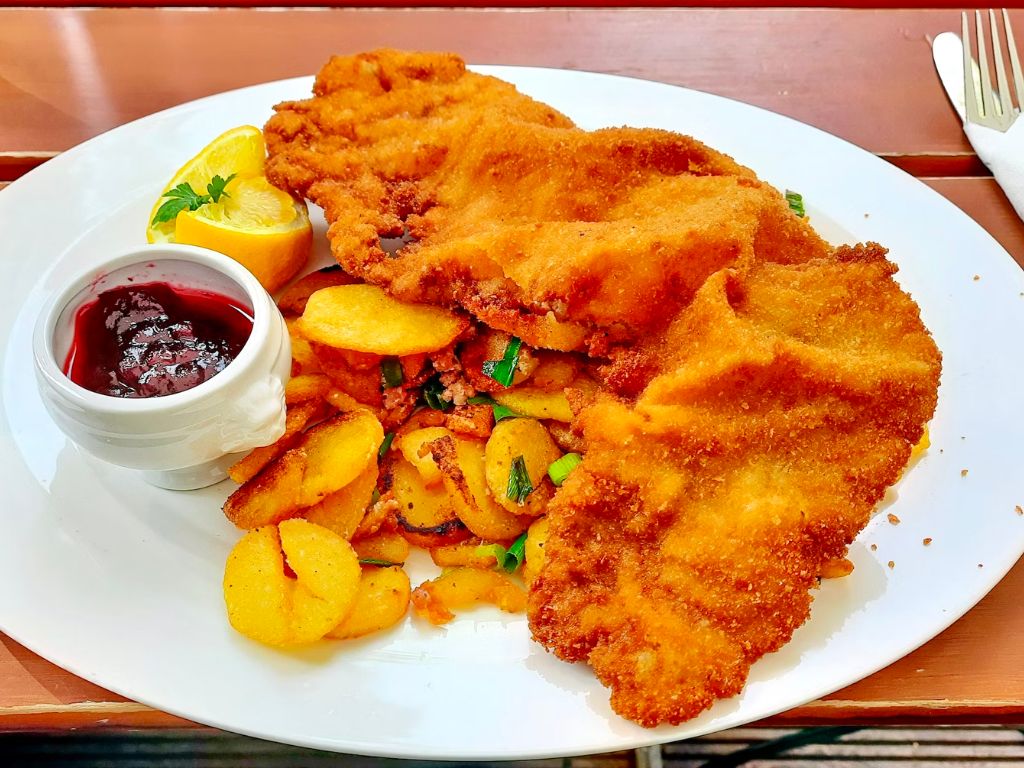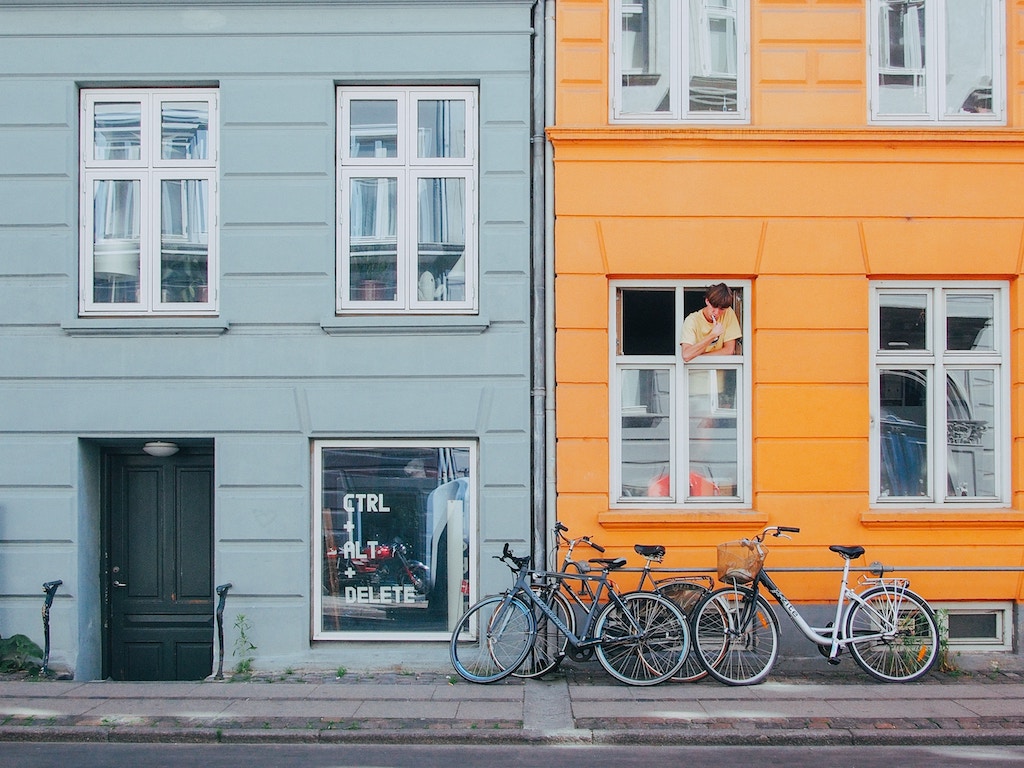Best Vienna Food Tours: An In-Depth Exploration of Traditional Austrian Foods

Get a taste for the best sides of Vienna's Food scene, with Context's Walking Tour
Delicious aromas waft throughout the streets of Vienna, from the savory scent of schnitzel to the sweet smell of pastries fresh out of the oven. Vienna’s food offers a sampling of Europe’s history – with a modern twist.
The roots of Austrian cuisine began with simple, hearty peasant fare, with some of the most famous dishes, like Wiener Schnitzel, Tafelspitz, and Goulash. These dishes were made with locally sourced ingredients such as beef, pork, and game and were often accompanied by potatoes, dumplings, and sauerkraut.
Today, Austrian cuisine is a mix of traditional dishes and modern innovations. Many of the country's quintessential dishes are still widely enjoyed, while new approaches expand the meaning of the Austrian gastronomic experience.
The best (and tastiest) way to experience Austrian food is through our Savoring Vienna Food Tour, led by a local food expert or writer – get a taste of a city by visiting neighborhood eateries and hearing insights straight from Vienna’s locals.
How to Make Traditional Austrian Foods
Austrian cuisine became more refined and sophisticated during the reign of the Austro-Hungarian Empire in the 19th century. The influence of the Empire's multi-ethnic population brought new flavors and ingredients to Austrian cuisines, such as paprika, noodles, and various spices.
In the 20th century, Austrian cuisine continued to evolve, with an increasing focus on regional and seasonal ingredients. Chefs began experimenting with new techniques and flavors, and there was a renewed interest in traditional dishes.
Goulash
Goulash is an iconic Viennese dish, traditionally made with beef or pork, onions, peppers, and paprika, along with other spices and vegetables. Originally a Hungarian specialty, the dish’s origins can be traced back to the Magyar tribes who settled in the Carpathian Basin in the 9th century. The word "goulash" itself comes from the Hungarian word "gulyás," which means "herdsman." Gulyás were the herdsmen who prepared the dish over an open fire.
Over time, goulash became a staple of Hungarian cuisine and was enjoyed by people across the country, from farmers and shepherds to nobles and royalty. In the 19th century, the dish was introduced to other parts of Europe, including Austria, where it became a popular comfort food.
Today, goulash is enjoyed throughout Central Europe and has spread to other parts of the world. Variations of the dish can be found in many different countries, with each region adding its unique twist to the recipe. Whether enjoyed as a traditional Hungarian stew or as a modern interpretation, goulash remains a beloved meal with a rich history and cultural significance.
On our Vienna Food Tour, you’ll get the chance to learn more about the dish’s history, its regional variations, and – of course – try it for yourself.
Wiener Schnitzel
The origins of Wiener Schnitzel can be traced back to the 18th century when the dish was made with pork or venison. However, it was not until the 19th century that the dish became popular in Vienna, and it was at this time that it began to be made with veal.
The first recorded recipe for Wiener Schnitzel was published in 1831 by the Viennese chef Franz Ruhm. Ruhm's recipe called for slices of veal to be pounded thin, coated in breadcrumbs, and then fried in butter until they were crispy and golden brown. Often served with spaetzle on the side and lemon to spritz over the top, Wiener Schnitzel is considered one of the national dishes of Austria.
Tafelspitz
Historical legend says that Tafelspitz, a dish made from boiled beef, was a beloved dish of Austrian Emperor Franz Joseph I. The emperor was supposedly so fond of Tafelspitz that he requested it several times per week.
Tafelspitz was originally a dish enjoyed by the upper classes in Austria, but it eventually became popular with people of all social classes. The dish was particularly popular in Vienna, becoming a staple of traditional Austrian cuisine.
The name "Tafelspitz" means "the tip of the table" in German, and it refers to the fact that the dish was traditionally served at banquets and other formal occasions. The beef used in Tafelspitz is typically a cut from the top of the round. To prepare Tafelspitz, the beef is simmered in a pot with vegetables and spices until tender and flavorful. The dish is traditionally served with various sides, including boiled potatoes, horseradish sauce, and creamed spinach.
Kaiserschmarrn
Kaiserschmarrn is said to have been created for Austrian Emperor Franz Joseph I, who loved pancakes. The story goes that one day while on a hunting trip, the emperor's cook accidentally tore his pancake while trying to flip it. To cover up his mistake, the cook shredded the pancake and served it to the emperor with some fruit and sugar on top. The emperor loved it so much that he named it Kaiserschmarrn, which means "emperor's mess" in German.
Kaiserschmarrn is typically made with a batter of eggs, flour, milk, and sugar. The batter is cooked in a pan until it sets, and then it is torn or shredded into small pieces. The pieces are then cooked until they are crispy and golden brown. Kaiserschmarrn is often served with fruit compotes, such as plum or apple, and powdered sugar on top.
Today, Kaiserschmarrn is a popular dessert in Austria and other parts of Europe, and it can be found on the menu of many restaurants and cafes. It is also a favorite among skiers and hikers, who enjoy it as a warm and satisfying meal on the mountain.
What food is Vienna known for?
Vienna's food scene has evolved significantly over the past century. The city's cuisine has been influenced by a number of factors, including changes in food production, immigration, and globalization.

In the early 20th century, Viennese cuisine was characterized by heavy dishes often made with pork, beef, and potatoes. After World War II, Vienna underwent significant changes, including the arrival of immigrants from all over Europe. This influx of new cultures and cuisines significantly impacted the city's food scene, and it became much more diverse and eclectic.
In the latter half of the 20th century, Vienna's food scene began to embrace international flavors and cooking techniques. Italian, Greek, Turkish, and Chinese restaurants popped up throughout the city, and fusion cuisine became more widespread.
Today, Vienna's culinary culture is a vibrant mix of traditional and modern dishes. Local and organic ingredients are highly prized, and many restaurants specialize in farm-to-table cuisine. There is also a growing trend towards plant-based and vegetarian cuisine, as well as innovative culinary techniques and modern interpretations of classic dishes.
The importance of sustainability in Austrian cuisine has accelerated in recent years. Many chefs and restaurants in Austria now focus on using locally sourced, organic, and seasonal ingredients in their dishes. Austria is a country founded on a strong tradition of agriculture and farming, and there is a growing movement towards promoting sustainable practices in the food industry.
In addition to using sustainable ingredients, many Austrian chefs also incorporate sustainability into their cooking techniques. For example, some chefs are using fermentation and preservation methods to reduce food waste, while others are experimenting with plant-based options to promote a more sustainable diet. Chefs are also exploring new ingredients like pumpkin seed oil, Styrian pumpkin seed, and wild game meats in contemporary Austrian cuisine.
Best Vienna Food Tours
Your delicious and memorable Vienna Food Tour with Context starts with the classics -- Viennese goulash and dumplings, a dish that highlights the history of Vienna as the center of the Austro-Hungarian Empire. Your next visits vary from tour to tour, depending on the group’s appetites. Stops may include a local cheese specialty shop to sample a variety of cheeses, sausages at a local café, a famous local confectionery shop, an Austrian wine cellar (to sip some delightful Austrian wines, including Gruner Veltliner, Zweigelt, and Blaufrankisch), or a street food stand to relish hearty favorites like Leberkäse—a type of sausage popular throughout Europe’s German-speaking nations.
While walking the sidewalks of Vienna, you'll develop a sense of gastronomy's role in the everyday lives of Austrians and the important relationship between a city and its gastronomic traditions. Finally, you’ll end your sensory tour on a sweet note with a visit to a local pastry shop or café, which gives you the opportunity to experience Austria’s famous café culture fully. As popular hubs for Vienna's intelligentsia, cafes have historically served as a mise en scene for political, artistic, and social movements.
At the end of your tour, you’ll have a greater understanding of how the contemporary food scene in the city converges with tradition and how culinary craftsmanship has shaped the way of life.
Cafe Culture in Vienna
Vienna’s coffeehouses have played an important role in its social and cultural life for centuries, offering not just a place to sit and enjoy a drink but a place to engage in thoughtful conversations and interactions.
In the late 17th century, coffeehouses began to spring up throughout Vienna. These cafes quickly became popular gathering places for intellectuals, artists, and other members of the city's cultural elite. People would come to the coffeehouses to discuss politics, literature, and the arts, and to enjoy a cup of coffee or a pastry.
By the 19th century, Vienna's coffeehouses had become famous throughout Europe for their unique atmosphere and lively social scene. Many of the city's most celebrated writers, artists, and thinkers spent hours in the coffeehouses, exchanging ideas and engaging in heated debates. Today, Vienna's coffeehouses are still an essential part of the city's cultural life. They continue to serve as gathering places for people from all walks of life, and they are known for their cozy atmosphere, elegant decor, and delicious coffee and pastries.
Learn How to Make Wiener Melange
One of the most famous parts of Vienna’s cafe culture is the Wiener Melange, a popular coffee drink similar to a cappuccino or a latte. It is made by combining a shot of espresso with steamed milk and is typically served in a glass cup with a handle. The name "Wiener Melange" comes from the French word "melanger," which means "to mix."
Want to know the secret to making a great Wiener Melange? It’s the quality of the coffee and the milk. The espresso should have a rich, smooth flavor and be strong and aromatic. The milk should be frothed just enough to create a light, creamy texture but not so much that it becomes overly foamy.
Wiener Melange is typically served with a small glass of water on the side, which is used to cleanse the palate between sips. It is often enjoyed with a pastry, such as a croissant or a slice of cake, and is a popular choice for breakfast or as an afternoon pick-me-up.
Spend some time in a Vienna cafe to truly understand the idea of Viennese Gemütlichkeit, which describes the cozy, comfortable, and relaxed atmosphere often associated with Vienna's coffeehouses and wine taverns.
The word "Gemütlichkeit" is derived from the German word "Gemüt," which means "mindset" or "disposition." It is often used to describe a sense of contentment, well-being, and a feeling of belonging and community.
Book a Vienna Food Tour
Food tours are a great way to experience the city like a local, allowing you to sample some of Vienna’s best food. After our Vienna Food Tour, you’ll leave with a more nuanced view of cuisine's role in the essential Austrian experience. From historic, storied dishes to contemporary fare, you’ll get the full picture of Vienna’s culinary evolution.
The tour offers an inside look at Vienna’s cafe culture and modern approach to classic dishes, evolving how we think about what we eat and its impact on our community and, ultimately, our world.
Even More from Context
We're Context Travel 👋 a tour operator since 2003 and certified Bcorp. We provide authentic and unscripted private walking tours and audio guides with local experts in 60+ cities worldwide.
Search by CityKeep Exploring














